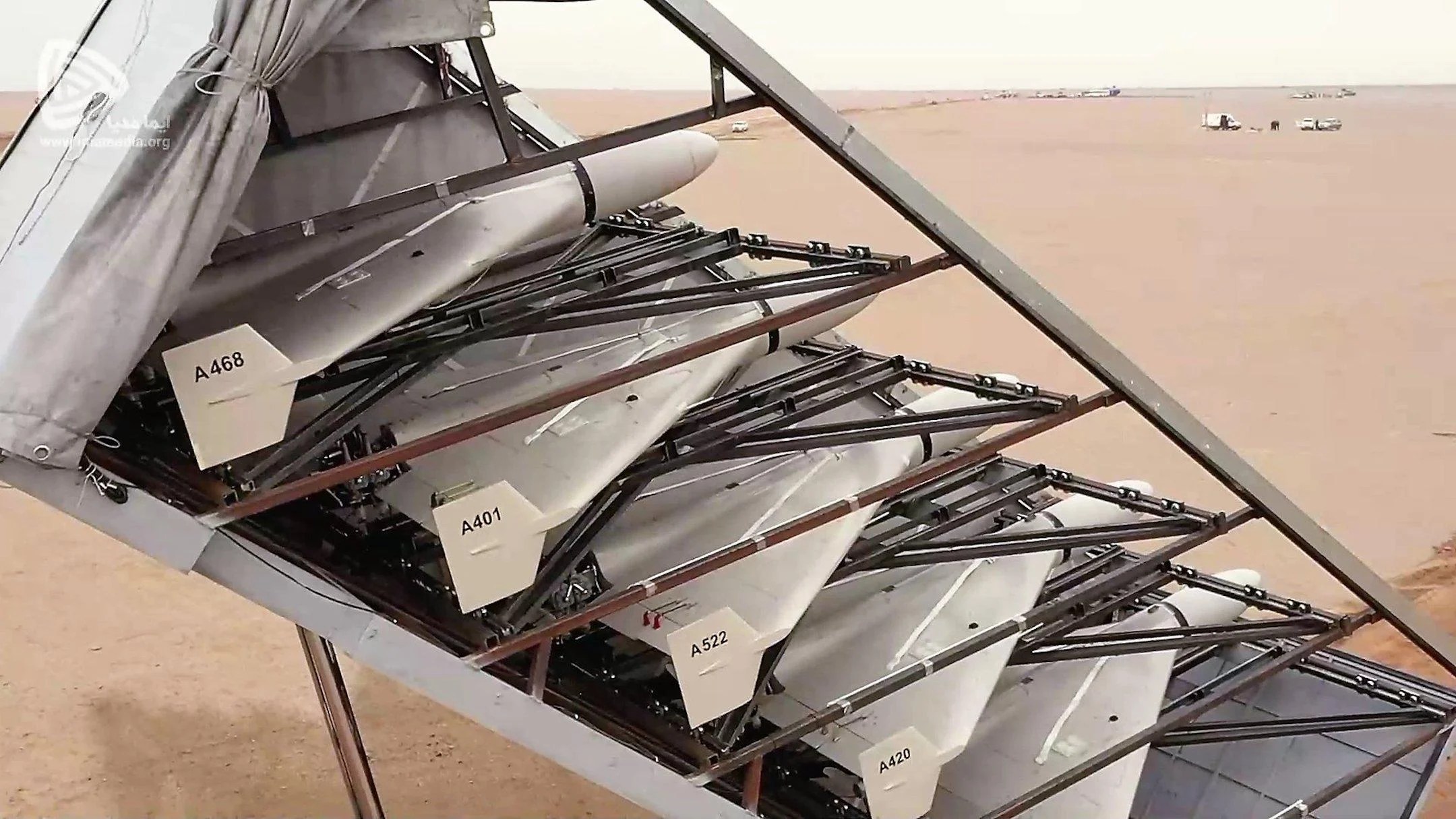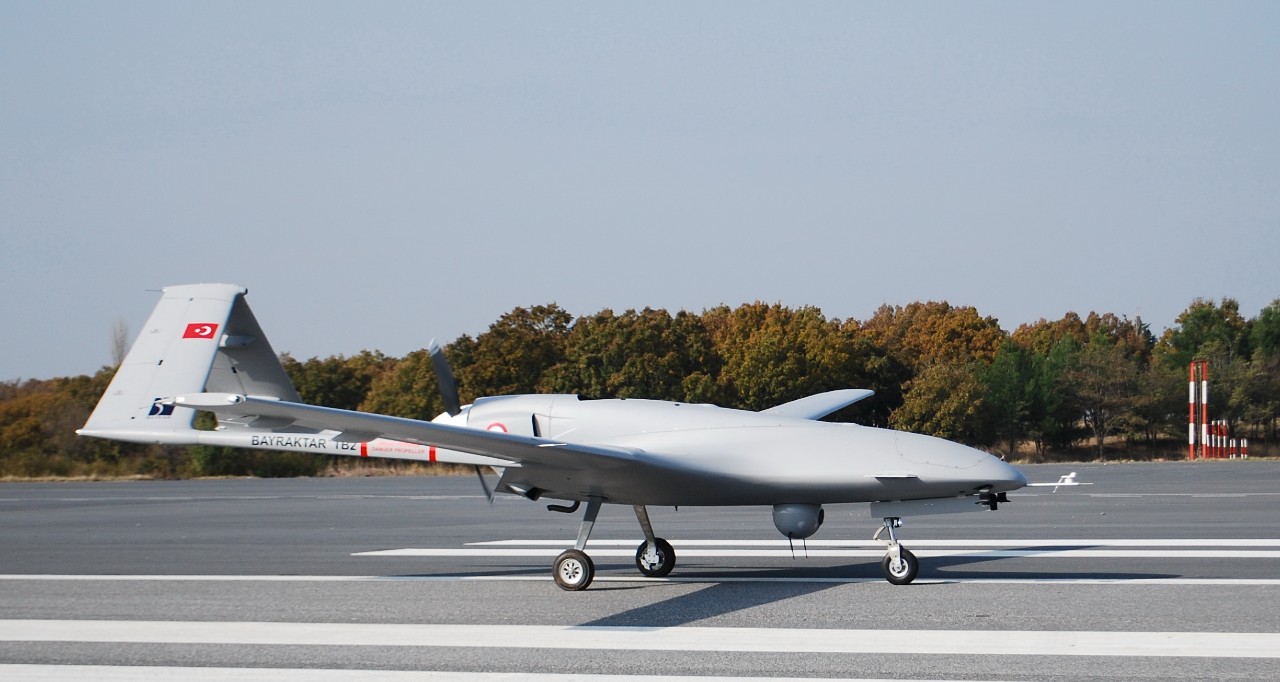Iran appears to be transferring its armored vehicles to the border of Azerbaijan after new clashes erupted between Azerbaijani and Armenian troops on September 13 that claimed the lives of over 100 soldiers.
The skirmish is the deadliest between the two countries since the Nagorno-Karabakh conflict in 2020.
Videos show a column of armored vehicles reportedly belonging to Iran’s Revolutionary Guard Corps (IRGC) moving towards the Azerbaijani border.
As per unconfirmed reports citing eyewitness accounts from the western part of Iran, the armored vehicles included tanks, armored combat vehicles, and large-caliber artillery. Apart from that, Iran’s drones are known to fly regularly in the area of the Azerbaijani-Iranian border.
#Armenia #Azerbaijani #September13
-In some areas and cities, fighters have stopped for several hours.
–#Iran army armored vehicles are heading toward the border with Azerbaijan.
-Emergency sirens activated in Kapan, southern Armenia.#BREAKING pic.twitter.com/WGj41oOQrg— Informazione Alternativa (@InformazioneA) September 13, 2022
It is not clear yet in which specific region of Iran the video was filmed.
Azerbaijan-Armenia Conflict
Iran remains concerned about the hostilities between Azerbaijan and Armenia. During the Nagorno-Karabakh war of 2020, rockets and mortars from the conflict inadvertently landed on Iranian soil, triggering warnings from Tehran.
Beyond the insecurity of its northern borders, the regional geopolitics has also worried Tehran, as the rivalry between Azerbaijan and Armenia presents another concern for Iran.
Iran and Azerbaijan share a deep ethnic and religious majority of Shia Muslims. Iran’s northern province is home to some 20 million Iranian Azerbaijani population who harbor solidarity with their co-religionists in Azerbaijan.
However, geopolitically, relations between Tehran and Baku have been tense since the disintegration of the Soviet Union. Baku, for years, has been accusing Tehran of exporting its brand of Shia ideology to Azerbaijan. On the other hand, Tehran has accused Baku of exporting Azerbaijani nationalism to Iran.
Over the years, Azerbaijan has cultivated relations with Iran’s primary rivals, the US and Israel, whom Tehran accuses of using Azerbaijani soil as a staging ground for various intelligence gathering operations against Iran. Azerbaijan is also a major customer of Israeli weapons.
Last year, an Iranian international affairs expert, Mustafa Khoshchashm, alleged that Israel used Azerbaijan as a staging ground for its theft of sensitive nuclear documents from Iran in 2018. He also said that Israelis sent drones to Iran many times from their base in Azerbaijan, and one of them, an Israeli-made Hermes drone, was shot down by Iran.
Also, considering the socio-economic woes and the ethnic Azerbaijani nationalism inside Iran, officials in Tehran have a genuine cause for worry, as US or Israel could try and mobilize the Iranian Azerbaijani community to create instability in Iran’s northern provinces.
Therefore, despite the geographic and cultural proximity to Azerbaijan, Iran is more comfortable with Orthodox Christian Armenia.
Armenians in Lebanon and Syria are largely aligned with the Lebanese militant group Hezbollah, Iran’s proxy. Also, Armenians dominate Iran’s alcohol trafficking business overseen by the IRGC.

The Deep Rooted Conflict
Apart from Israel and the US, Azerbaijan also enjoys strong relations with Turkey, which is not an adversary of Iran but is undoubtedly viewed as a competitor in the regional geopolitics by Tehran’s leadership.
Turkish and Israeli-made drones helped turn the tide of war in favor of Baku in 2020.
Azerbaijan leveraged the sizeable fleet of Bayraktar TB2s acquired from Turkish drone company, Baykar and the Israeli-made kamikaze drones it had amassed over the years to destroy many Armenian tanks, artillery, and air-defense systems.
“Thanks to advanced Turkish drones owned by the Azerbaijan military, our casualties on the front shrunk,” said Azerbaijan President Ilham Aliyev in a televised interview with the Turkish news channel TRT Haber.
Selçuk Bayraktar, the Chief Technology Officer of Baykar, who is a believer in the concept of ‘One Nation-Two States’ of Turkey and Turkic-speaking Azerbaijan, said in an interview that he was proud of the fact that TB2 drones had been used in enabling Azerbaijan to recapture swathes of the disputed territory of Nagorno-Karabakh from Armenian control in late 2020.
“The illegal occupation of Karabakh was like a heart wound since our youth. And as engineers developing the technology, it is an honor to have helped our brothers and sisters here [in Azerbaijan] regain their land,” Bayraktar said.
While during the Nagorno-Karabakh conflict, Iran had to take a balanced position because of its sizeable Azerbaijani or Azeri minority population while understanding that Azerbaijan enjoyed military superiority over Armenia.
Iran’s Supreme Leader Ali Khamenei, who is also of Azeri origin, said, “Azerbaijani lands occupied by Armenia should be liberated and returned to Azerbaijan” while at the same time demanding that the war must end quickly and the Armenians of Nagorno-Karabakh be protected.
However, a year after the end of the conflict, Baku angered Tehran by imposing a ‘road tax’ and detaining two Iranian truck drivers entering the Nagorno-Karabakh region — a route truck drivers take to transport fuel and goods to Armenia.
Shortly after this, Azerbaijani President Ilham Aliyev, in an interview with the Turkish Anadolu Agency, accused Iran of violating Azerbaijan’s sovereignty by hiding the identity of the Iranian trucks heading to Armenia.
This prompted a strong response from Iran, with the IRGC conducting an extensive ground military exercise along the Azerbaijani-Iranian border called the “Khyber Conquerors” in October 2021, in which hundreds of combat battalions, including infantry, rocket artillery, and armored and electronic warfare units, were mobilized in less than 48 hours.

Turkish Bayraktar Drones vs Iranian UAVs
The commonality between Iran and Turkey is that both countries are emerging as drone superpowers. It is possible that Tehran, after taking a cue from Azerbaijan’s use of Turkish-made drones during the Nagorno-Karabakh conflict, may also supply its drones to Armenia.
In August, Iran hosted a military tournament, ‘Falcon Hunting,’ in which more than 70 military personnel from Russia, Belarus, and Armenia took part. The competition involved drones for 24×7 surveillance and to guide precise artillery fire.
The competition came amid allegations by the US that Russia could buy drones from Iran for its war effort in Ukraine, where several Russian armored columns have been obliterated by Turkish-made Bayraktar TB2 drones employed by the Ukrainian military.
Shortly after this tournament, the first shipment of Iranian UAVs arrived in Russia, according to US defense officials, who said that Iran had sent two types of drone – the Mohajer-6 and Shahed-series – which could be used to conduct strikes, electronic warfare, and targeting.
Mohajer-6 has a maximum range of around 200 kilometers, whereas the Bayraktar TB2’s full range is about 300 kilometers and can stay airborne for up to 27 hours.
As for the Shahed series, reports suggest that the units sent to Russia could include the Shahed-129 and Shahed-191 drones, based on recent satellite imagery showing Russian officials viewing these two drones at Iran’s Kashan Airbase.
Shahed-191 and Shahed-129 can reportedly travel significantly farther than the TB2, with their range up to 450 and 2000 kilometers, respectively.
However, Bayraktar TB2’s endurance exceeds that of the above-mentioned Iranian-made drones. TB2 drones can stay airborne for up to 27 hours, while the Shahed-129 and Shahed-191 can remain in the air for 24 hours and 4.5 hours, respectively. The Mohajer has an endurance of only 12 hours.
Also, the Bayraktar TB2 can travel higher than the Shahed-129 and Mohajer-6, which can reach maximum altitudes of about 23,950 feet and 18,000 feet, respectively, whereas the Turkish-made drone can reach up to 25,000 feet.

As for the payload, the TB2 can carry around 150 kilograms, the Shahed-129 can reportedly carry a heavier payload of about 400 kilograms, and the Mohajer-6 can carry only approximately 40 kilograms.
The exact configuration of the Mohajer-6 drone and what weapons have been sent to Russia remain unknown, as there has been no official confirmation from Iran or Russia on the drone’s delivery.
The Mohajer-6 is an Intelligence, Surveillance, Target Acquisition, and Reconnaissance (ISTAR) UAV capable of carrying a multispectral surveillance payload and up to two precision-guided munitions.
The drone’s armament consists of two hardpoints, one under each wing, designed to carry one Qaem TV/IR glide bomb or one Almas missile. Per some unconfirmed reports, there are also variants of the Mohajer-6 having four hardpoints, two under each wing, capable of carrying the same munitions.
The Shahed-129 has a chin-mounted Oghab-6 EO/IR sensor turret, and the drone can reportedly carry four Sadid-345 precision-guided munitions.
While the Shahed-191 is similar to Shahed-129 in terms of the type of sensors and munitions, it is reportedly designed to be a low-observable system. The drone is said to have two internal weapons bays that can each carry a Shadid-342 guided glide bomb with a fragmentation warhead.
Turkish Drones Already Provoking Iran
Turkish attack drones reportedly violated Iran’s airspace and were hit by electronic warfare systems.
Iranian journalist Khayal Muazzin posted a video on his Telegram handle on September 19, allegedly showing a Turkish drone observed on the open source flight tracking platform, ‘Flightradar 24’, entering the Iranian airspace from Turkey.
Reports suggest the drone was struck by a massive electronic attack from Iranian forces, based on the sharp change in its altitude and flight speed, as observed on Flightradar 24.
Apart from that, a Turkish Bayraktar TB2 was also reportedly observed approaching the Iranian border, presumably for reconnaissance.
EurAsian Times asked K. N. Pandita, the former Director of the Centre of Central Asian Studies, Kashmir University, to better understand the prospects of Iranian drones entering the Armenia-Azerbaijan conflict theatre, just as they did in Ukraine.
“Iran supplied drones to Russia for specific purposes. Russia is standing with an eyeball-to-eyeball stance with the US. Iran’s hatred is against the US. Now in the case of Armenia, no such perceptions are available,” Pandita explained.
“The entire issue of Azerbaijan-Armenian logjam does not assume any real and serious threat to Iran. Therefore, it is beyond imagination that Iran will give drones to Armenia to fight Azerbaijan,” he said.
Pandita also noted that “the US and Israel are deeply interested in the independence and security of Armenia because Armenia has a strong diaspora in the US.”
For now, Iranian and Turkish drones are on opposite ends in the Russia-Ukraine war. Will these drones end up on the opposite sides again in the Armenia-Azerbaijan conflict is yet to be seen.
- Contact the author at tanmaykadam700@gmail.com
- Follow EurAsian Times on Google News




